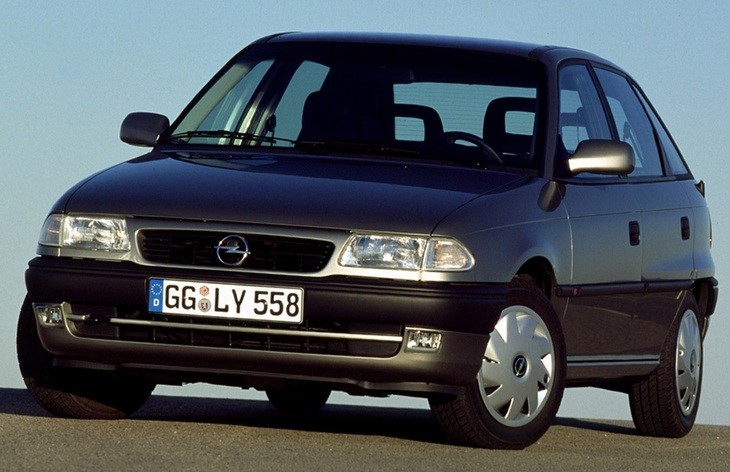
Opel Astra engines
Content
1991 was the premiere year for the new Adam Opel OG car. The end of the thirty-year hegemony of the Opel Kadett E was the birthday of the star. This is how the name of the continuer of traditions, the Astra car, sounds in translation from Latin. The cars were designated starting with the letter F. The first cars came to the European market as representatives of the new “golf class”. Cars of the J and K series are still produced at General Motors factories to this day.

Astra F - trendsetter of European fashion
Concern Adam Opel AG brought several modifications of the F series to the market. For example, the Caravan variant was produced as a five-door station wagon and a three-door “truck”. In addition, buyers could choose:
- sedan - 4 doors;
- hatchback - 3 and 5 doors.
Cars differed exceptionally successful layout. Hatchbacks had a luggage compartment of 360 liters. The station wagon in the standard version took on board a load of up to 500 liters, and with the rear row seats folded down - 1630 liters. Simplicity, functionality and convenience - these are the main qualities that were noted by all users of the new car without exception. Restyling in 1994 brought new materials for interior trim to the entourage of the car. An airbag was installed on the steering column.
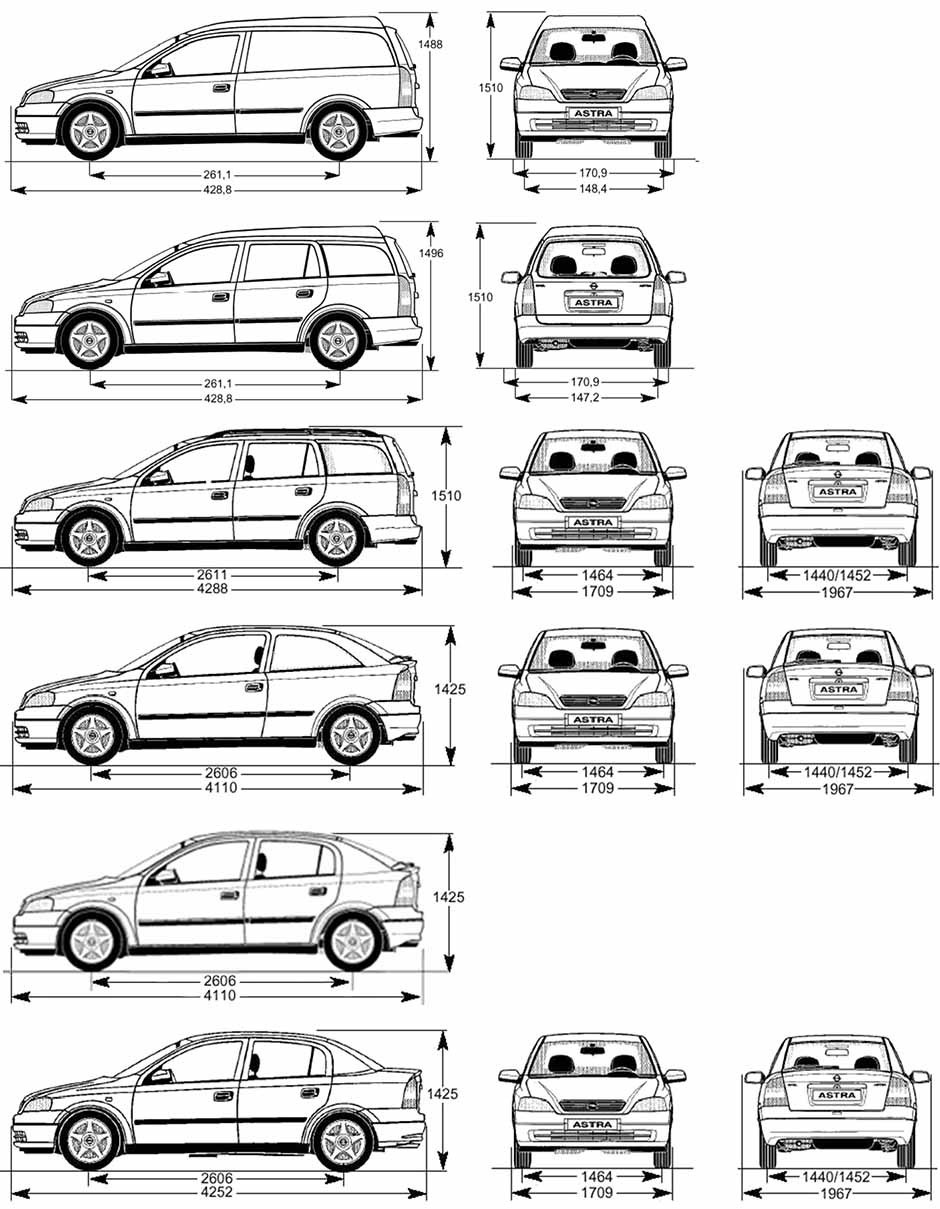
The company did not forget the lovers of outdoor activities and sports. For them, two versions of 2-liter engines were installed on the GT version - 115 and 150 hp. In 1993, the range was supplemented by a four-seater open car of the convertible class. Its small-scale production was entrusted by the German management to the little-known Italian automobile company Bertone. The car received an addition to the marking - the abbreviation GSI (Grand Sport Injection). Such "charged" versions left the assembly lines of factories in the UK, South America, Australia, India, Poland, South Africa, China until 2000. For the next four seasons, F series cars from Poland were sold to the countries of the former socialist camp and Turkey.
In the new century - under the letter G
The second generation of the popular car received the next letter of the Latin alphabet. Like the first version, Astra G was produced in many countries around the world. In Australia, the Holden label has been updated with the letters TS. The British version became known as the Vauxhall Mk4. Opel Astra G got to the countries of the former USSR:
- Russia - Chevrolet Viva.
- Ukraine - Astra Classic.
Modifications of the G series received two types of transmission - a Japanese 4-speed automatic transmission and a 5-speed manual with hydraulic drive. Other characteristic design details:
- anti-lock braking system (ABS);
- suspension - McFerson front, semi-independent beam - rear;
- disc brakes.
A novelty was the installation of an anti-slip system.
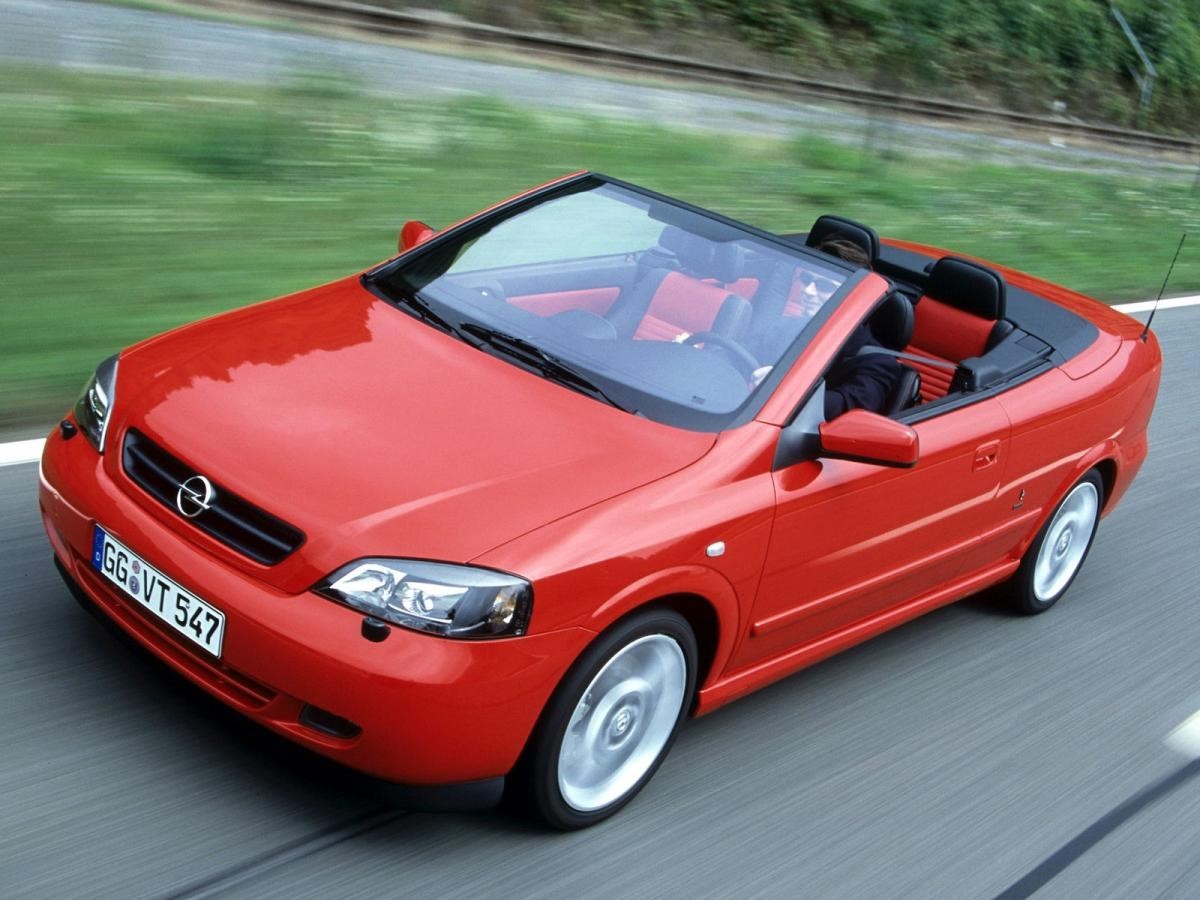
The highlight of the lineup was the OPC GSI hatchback with a naturally aspirated 160 hp engine (1999). Three years later, under this abbreviation, cars of other layouts began to appear - coupes, station wagons, convertibles. The latter became a real hit on the European market. With a turbocharged engine with a capacity of 192-200 hp. and a volume of 2,0 liters. he looked like a real monster.
Astra H - Russian premiere
In 2004, the production of a modification of the third series of Astra cars was organized in Russia. SKD assembly of cars was carried out by the Kaliningrad enterprise "Avtotor" for five years. 2008 was the premiere year for the full-scale serial production of the Opel model. The conveyor was located in the village of Shushary, Leningrad Region. Some time later, the assembly was completely redesigned for Kaliningrad.
The H series became the premiere for Astra cars of a new layout - sedans. They replaced the expired Vectra B. After the Istanbul premiere in 2004, the new car was produced in Germany, Ireland, Mexico and Brazil (4-door Chevrolet Vectra hatchback). In the line of the series there were also body models and station wagons. The latter became the basis for the creation in 2009 of the Astra TwinTop coupe-cabriolet. In Russia, these models were produced until 2014 as Astra Family.
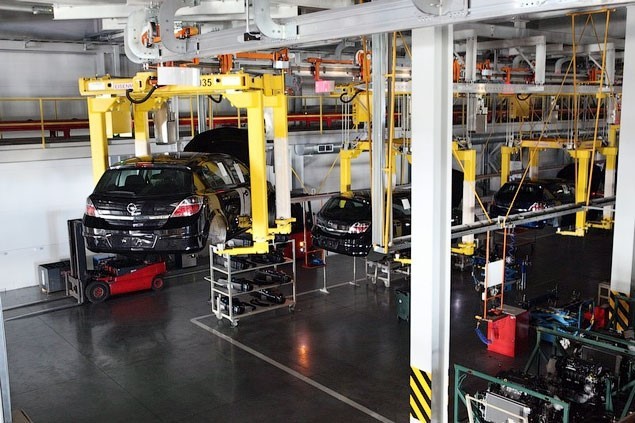
And yet, the hatchback layout remained the most popular. In the five-door version, with a 1,6-liter engine with a capacity of 115 hp, the car had a lot of advantages:
- airbags for four passengers;
- rear power windows;
- seat heating system;
- climate control;
- rear view camera.
Coupled with a CD/mp3 stereo system and a six-speed gearbox in the premium versions, the car looked great.
The most powerful representatives of the H series are cars assembled in Active and Cosmo configurations with automatic transmissions and turbocharged engines:
- 1,6-liter 170 hp;
- 1,4-liter 140 hp
New platform for a new series
At the 2009 Frankfurt Motor Show, Opel introduced a new compact platform, the Delta II, to the international automotive market. The outlines of the new car largely echoed the design decisions of the authors of the Insigna concept. The first plant where cars of the H series began to be assembled in full capacity was Vauxhall in the English county of Cheshire.
A funny fact from the history of the series is the refusal of Opel management to use the letter I following H in the Latin alphabet.
The authorship of the concept of the model belongs to the team of the Opel Design Center (Rüsselheim, Germany). The total purge time of the conceptual model in the wind tunnel exceeded 600 hours. The designers have made significant changes to the traditional appearance of the hatchback:
- wheelbase extended by 71 mm;
- increased track distance.
The chassis is designed according to the mechatronic scheme. This made it possible to combine the mechanics and "smart" electronic control systems of various parts of the car, such as the FlexRide suspension. The driver can independently adapt the three types of suspension (Standart, Sport or Tour) to suit his driving style.
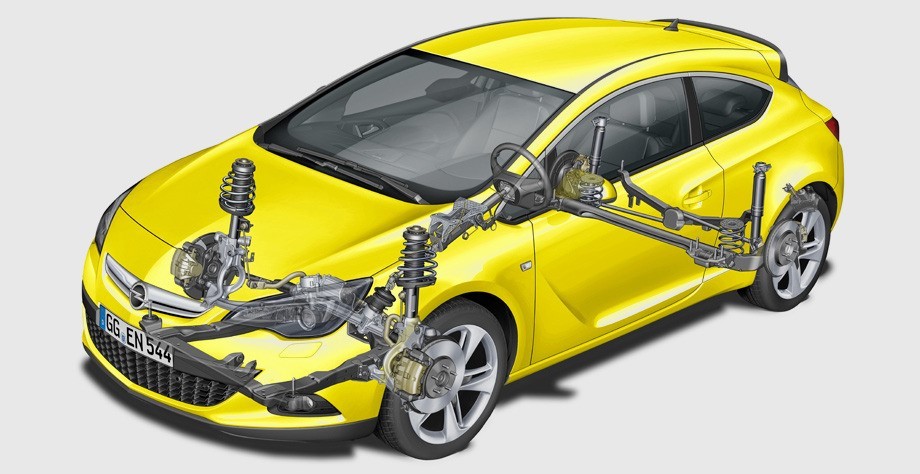
In addition to revolutionary changes in the control system, the design team offered customers other pleasant innovations:
- modern interior lighting system and ergonomic seats;
- bi-xenon headlights of the new generation AFL +.
It was decided to install a camera for front view Opel Eye on all models of the new series. It is able to recognize road signs set along the route and warn of a deviation from the optimal trajectory of movement.
Astra K - the car of the future
The most modern member of the Astra family of Opel cars is the K-series hatchback. Its design and features were made available to potential buyers in September 2015 in Frankfurt. 10 months later, the first car found its buyer:
- in the UK - as Vauxhall Astra;
- in China - under the Buick Verano brand;
- on the fifth continent with the Holden Astra label.
The design of the car has become even more modern in comparison with previous modifications. It is equipped with the latest know-how in the field of automotive technology. In addition to the 5-door hatchback, a front-wheel drive station wagon is also available. New items are assembled at two factories - in the Polish Gliwice and in Elzmirport, in Foggy Albion. The official platform name is D2XX. Among the cars of the golf class, which is now more familiar as the C-class, the Astra K is either jokingly or seriously called the “quantum leap”.
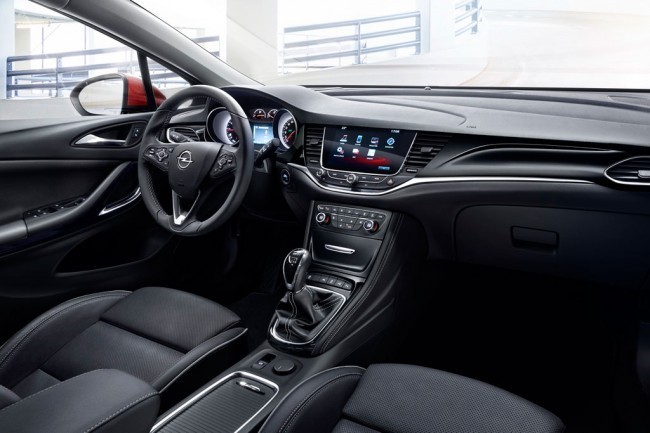
Drivers are offered nothing less than 18 different seat adjustment options. Needless to say, AGR certified. Besides:
- automatic Opel Eye for tracking road markings;
- dead zone control;
- a system for returning the car to its lane when crossing the lane;
In the “mechanics” version, the volume of the 3-cylinder engine with a power of 105 hp. is only 1 liter, and the speed on the autobahn is under 200 km / h. For a six-speed automatic transmission, a 4-cylinder 1,6 liter is used. engine (136 hp).
Power plants for Opel Astra
This model of the famous German automaker is the absolute champion among its brothers in terms of the number of engines that were installed on various modifications. For five generations, there were as many as 58 of them:
| Marking | Volume, l. | A type | Volume, | Maximum power, kW / h.p. | Supply system |
|---|---|---|---|---|---|
| 3 cm | |||||
| A13DTE | 1.2 | turbocharged diesel | 1248 | 70/95 | Common Rail |
| A14NEL | 1.4 | turbocharged petrol | 1364 | 88/120 | distributed injection |
| A14NET | 1.4 | –:– | 1364 | 101 / 138, 103 / 140 | DOHC, DCVCP |
| A14XEL | 1.4 | petrol | 1398 | 64/87 | distributed injection |
| A14XER | 1.4 | –:– | 1398 | 74/100 | DOHC |
| A16 EASY | 1.6 | turbocharged petrol | 1598 | 132/180 | direct injection |
| A16XER | 1.6 | petrol | 1598 | 85 / 115, 103 / 140 | distributed injection |
| A16XHT | 1.6 | –:– | 1598 | 125/170 | direct injection |
| A17DTJ | 1.7 | diesel | 1686 | 81/110 | Common Rail |
| A17DTR | 1.7 | –:– | 1686 | 92/125 | –:– |
| A20DTH | 2 | –:– | 1956 | 118/160, 120/163, 121/165 | –:– |
| A20DTR | 2 | turbocharged diesel | 1956 | 143/195 | –:– |
| B16DTH | 1.7 | –:– | 1686 | 100/136 | –:– |
| B16DTL | 1.6 | –:– | 1598 | 81/100 | –:– |
| C14NZ | 1.4 | petrol | 1389 | 66/90 | single injection, SOHC |
| C14 SE | 1.4 | –:– | 1389 | 60/82 | port injection, SOHC |
| C18 XEL | 1.8 | –:– | 1799 | 85/115 | –:– |
| C20XE | 2 | –:– | 1998 | 110/150 | –:– |
| X14NZ | 1.4 | –:– | 1389 | 66/90 | –:– |
| X14XE | 1.4 | –:– | 1389 | 66/90 | distributed injection |
| X16SZ | 1.6 | –:– | 1598 | 52 / 71, 55 / 75 | single injection, SOHC |
| X16SZR | 1.6 | –:– | 1598 | 55 / 75, 63 / 85 | single injection, SOHC |
| X16XEL | 1.6 | –:– | 1598 | 74 / 100, 74 / 101 | distributed injection |
| X17DT | 1.7 | turbocharged petrol | 1686 | 60/82 | SOHC |
| X17DTL | 1.7 | turbocharged diesel | 1700 | 50/68 | –:– |
| X18XE | 1.8 | petrol | 1799 | 85/115 | distributed injection |
| X18XE1 | 1.8 | –:– | 1796 | 85/115, 85/116, 92/125 | –:– |
| X20DTL | 2 | turbocharged diesel | 1995 | 60/82 | Common Rail |
| X20XER | 2 | petrol | 1998 | 118/160 | distributed injection |
| Y17DT | 1.7 | turbocharged diesel | 1686 | 55/75 | Common Rail |
| Y20DTH | 2 | –:– | 1995 | 74/100 | –:– |
| Y20DTL | 2 | –:– | 1995 | 60/82 | –:– |
| Y22DTR | 2.2 | –:– | 2172 | 88 / 120, 92 / 125 | –:– |
| Z12XE | 1.2 | petrol | 1199 | 55/75 | distributed injection |
| Z13DTH | 1.3 | turbocharged diesel | 1248 | 66/90 | Common Rail |
| Z14XEL | 1.4 | petrol | 1364 | 55/75 | distributed injection |
| Z14XEP | 1.4 | –:– | 1364 | 64 / 87, 66 / 90 | –:– |
| FROM 16 YEARS OLD | 1.6 | turbocharged petrol | 1598 | 132/180 | –:– |
| Z16SE | 1.6 | petrol | 1598 | 62 / 84, 63 / 85 | –:– |
| Z16XE | 1.6 | –:– | 1598 | 74 / 100, 74 / 101 | –:– |
| Z16XE1 | 1.6 | –:– | 1598 | 77/105 | –:– |
| Z16XEP | 1.6 | –:– | 1598 | 74/100, 76/103, 77/105 | –:– |
| Z16XER | 1.6 | –:– | 1598 | 85/115 | –:– |
| Z16YNG | 1.6 | gas | 1598 | 71/97 | –:– |
| Z17DTH | 1.7 | turbocharged diesel | 1686 | 74/100 | Common Rail |
| Z17DTL | 1.7 | –:– | 1686 | 59/80 | –:– |
| Z18XE | 1.8 | petrol | 1796 | 90 / 122, 92 / 125 | distributed injection |
| Z18XEL | 1.8 | –:– | 1796 | 85/116 | –:– |
| Z18XER | 1.8 | –:– | 1796 | 103/140 | –:– |
| Z19DT | 1.9 | turbocharged diesel | 1910 | 88/120 | Common Rail |
| Z19DTH | 1.9 | –:– | 1910 | 88 / 120, 110 / 150 | –:– |
| Z19DTJ | 1.9 | –:– | 1910 | 88/120 | –:– |
| Z19DTL | 1.9 | –:– | 1910 | 74 / 100, 88 / 120 | –:– |
| Z20LEL | 2 | turbocharged petrol | 1998 | 125/170 | distributed injection |
| Z20LER | 2 | gasoline atmospheric | 1998 | 125/170 | direct injection port injection |
| turbocharged petrol | 1998 | 147/200 | |||
| FROM 20 YEARS OLD | 2 | turbocharged petrol | 1998 | 140/190, 141/192, 147/200 | distributed injection |
| Z22SE | 2.2 | petrol | 2198 | 108/147 | direct injection |
Two motors from the entire line are more remarkable than others. Only the two-litre Z20LER was released under the same label in two different versions:
- atmospheric, with direct fuel injection, 170 hp
- two hundred strong injection, with a turbocharger.
The Z16YNG is the only natural gas engine for the Opel Astra.
The most popular engine for Opel Astra
It is quite simple to single out the motor, which more often than others became the basis of the power plant on Opel Astra cars. This is a 1,6-liter gasoline engine of the Z16 series. Five of its modifications were released (SE, XE, XE1, XEP, XER). All of them had the same volume - 1598 cubic centimeters. In the engine power supply system, an injector was used to supply fuel - a distributed injection control unit.

This 101 hp engine in 2000, he became the successor to the X16XEL engine, which was installed on various Opel models. It has been used for five years on the Astra G. Of the design features, it should be noted the presence of the Multec-S (F) control system, electronic throttle control. Oxygen sensors are installed on both sides of the catalyst.
Despite its great popularity, its operation was not without problems. The main ones include:
- increased oil consumption;
- backlash of collector mounting parts.
To help motorists who encounter problems with the operation of the engine, the developers installed the EOBD self-diagnosis system. With its help, you can find the cause of a malfunction in the engine very quickly.
The right choice of engine when buying an Astra
The process of choosing the optimal combination of the layout of the car and the power plant is always accompanied by painful thoughts, a long study of the equipment and, finally, self-testing. Surprisingly, with such a wide range of Ecotec engines, it is not difficult to choose the optimal layout of the power plant for the Opel Astra. The top three of various reviews and ratings of recent years has consistently included the turbocharged gasoline A14NET. Engine displacement - 1364 cm3, power - 1490 hp. maximum speed - 202 km / h.

The turbocharger helps the engine to easily cope with driving on roads of any complexity and configuration. Compared to any two-liter engine, it looks much more confident. It is surprising that the designer put a turbine on an engine of such a small volume. But they absolutely guessed it, since the motor turned out to be very successful. After the premiere in 2010, he immediately went into series for several types of Opel cars - Astra J and GTC, Zafira, Meriva, Mocca, Chevrolet Cruise.
A good find was the installation of the timing chain. It looks much more reliable than a belt. Due to the installation of hydraulic lifters, the need for constant valve adjustment was eliminated. Changing the valve timing is controlled by the DCVCP system. Turbine A14NET has three distinctive features:
- reliability;
- economy;
- small size.
The "cons" include the exceptional selectivity of the unit to the quality of the oil being poured.
The engine should not be heavily loaded while driving. It is not designed to push the maximum speed and achieve top speed, such as the A16XHT, or A16LET. The best option for driving is economical driving at medium speeds. Fuel consumption will not exceed 5,5 liters. on the highway, and 9,0 liters. on the city road. Subject to all the stated requirements of the manufacturer, this engine will cause the operator a minimum of problems.

